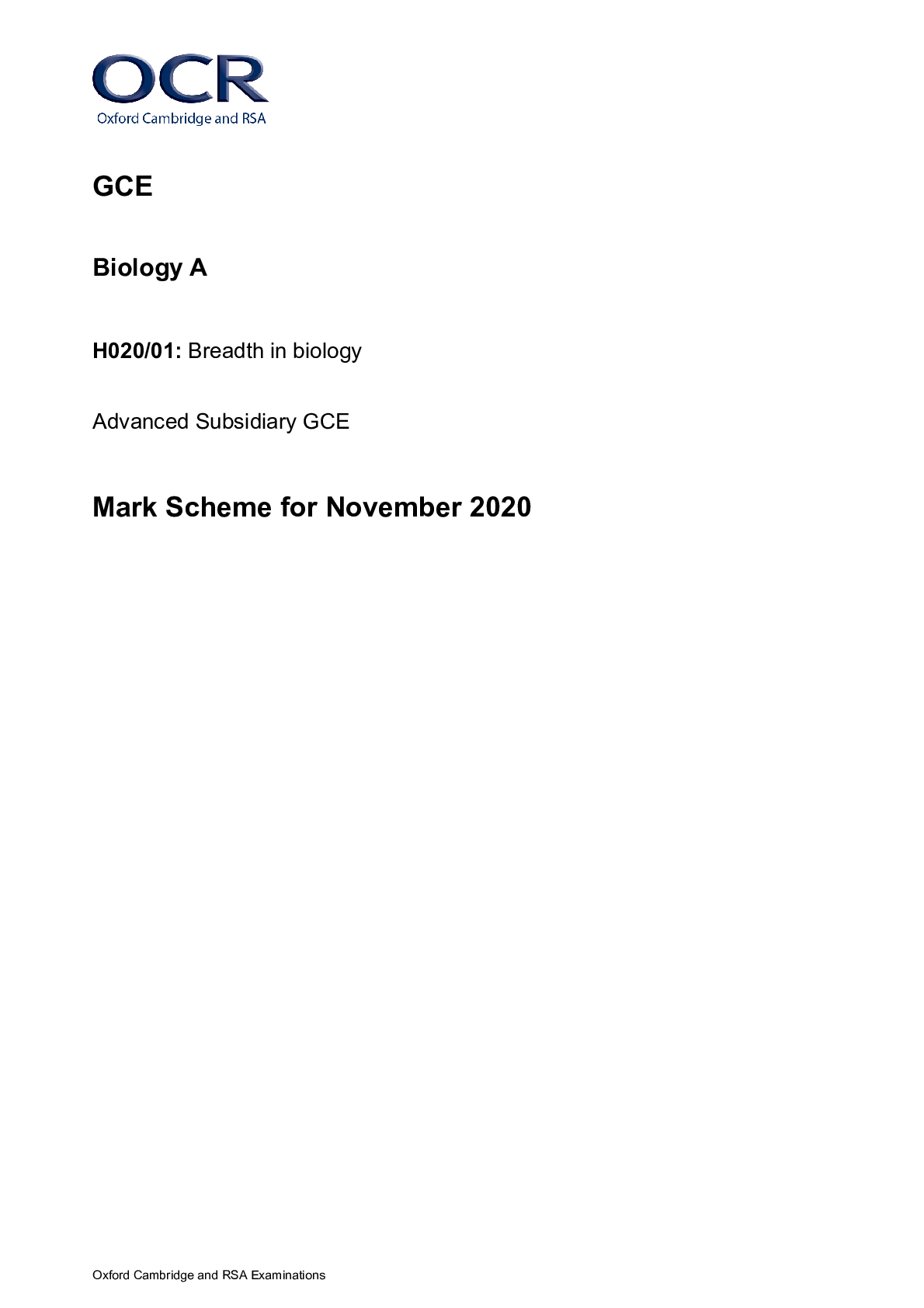Language Development > GCSE MARK SCHEME > GCE Latin H443/04: Verse Literature Advanced GCE Mark Scheme for November 2020 (All)
GCE Latin H443/04: Verse Literature Advanced GCE Mark Scheme for November 2020
Document Content and Description Below
GCE Latin H443/04: Verse Literature Advanced GCE Mark Scheme for November 2020 Oxford Cambridge and RSA Examinations GCE Latin H443/04: Verse Literature Advanced GCE Mark Scheme for November 202... 0Oxford Cambridge and RSA Examinations OCR (Oxford Cambridge and RSA) is a leading UK awarding body, providing a wide range of qualifications to meet the needs of candidates of all ages and abilities. OCR qualifications include AS/A Levels, Diplomas, GCSEs, Cambridge Nationals, Cambridge Technicals, Functional Skills, Key Skills, Entry Level qualifications, NVQs and vocational qualifications in areas such as IT, business, languages, teaching/training, administration and secretarial skills. It is also responsible for developing new specifications to meet national requirements and the needs of students and teachers. OCR is a not-for-profit organisation; any surplus made is invested back into the establishment to help towards the development of qualifications and support, which keep pace with the changing needs of today’s society. This mark scheme is published as an aid to teachers and students, to indicate the requirements of the examination. It shows the basis on which marks were awarded by examiners. It does not indicate the details of the discussions which took place at an examiners’ meeting before marking commenced. All examiners are instructed that alternative correct answers and unexpected approaches in candidates’ scripts must be given marks that fairly reflect the relevant knowledge and skills demonstrated. Mark schemes should be read in conjunction with the published question papers and the report on the examination. © OCR 2020H443/04 Mark Scheme November 2020 2 Annotations Annotation Meaning Blank page Benefit of doubt Unclear Cross Extendable horizontal line Extendable horizontal wavy Tick Omission mark Consequential error Slash Expandable vertical wavy line Knowledge from English material/ outside set linesH443/04 Mark Scheme November 2020 3 Subject Specific Marking Instructions Guidance on applying the marking grids for set text translation The general principle in assessing each section should be the proportion (out of 5) of sense achieved. One approach for each section is given. Acceptable alternatives will be illustrated during Standardisation, but examiners should assess on its own merits any approach that satisfactorily conveys the meaning of the Latin – the crucial consideration being the extent to which every Latin word is satisfactorily rendered in some way in the English. The determination of what a “slight” error is only necessary when it is the only error in a translation; this distinction will then determine whether a mark of 5 or 4 is appropriate. Where marks of 4, 3, 2, 1 and 0 are applicable, the overall proportion of meaning conveyed in the section is the only consideration. The term “major” error has been used here to determine an error which is more serious than a “slight” error. The classification below should be seen only as a general guide, the intention of which is to maintain standards year-on-year. Lead markers should consider each instance on its own merits in the context of the passage and the section. 1. Wrong past tenses are generally considered a “slight” error, but other tense errors are “major”. Note, however, that perfect participles can often be correctly translated as present. Note also that allowance must be made for differences of idiom (e.g. ubi venerunt: ‘when they had come’ would be correct; similarly ‘when they came’ for cum venissent). Where there are historic presents, the candidate should consistently use the past or present; if the candidate is inconsistent, the error should be counted once only, as a “slight” error. If a candidate repeatedly makes the same error of tense, the error should be counted once only. 2. Vocabulary errors that are close to the right meaning are “slight” errors; any wrong meaning that alters the sense is “major”. (e.g. amicis suasit: ‘he persuaded his friends’ would be a “slight” error; ‘he spoke to his friends’ would be “major”). 3. Omission of particles (e.g. conjunctions) that add nothing to the sense (e.g. autem) may be ignored; those that add little to the sense (e.g. sed, tamen, igitur) are “slight” errors; omission of other words is generally a “major” error. All likely omissions should be categorised at Standardisation. 4. Errors of number are usually “major”, but where the difference is minimal, they are “slight” (e.g. vinis consumptis: ‘the wine having been consumed’); sometimes they can be ignored altogether (e.g. haec dixit ‘he said this’; maximi labores ‘very great work’; curae iraeque ‘anxiety and anger’). Each instance should be categorised at Standardisation. 5. Errors of construction are always “major”, unless a construction has been successfully paraphrased (e.g. promisit se celeriter adventurum esse: ‘he promised a swift arrival’).H443/04 Mark Scheme November 2020 4 6. Errors of case are always “major”, unless the containing clause has been successfully paraphrased. (e.g. tribus cum legionibus venit: ‘he brought three legions with him’). 7. Change from active to passive is allowable if the agent is expressed or if the agent is omitted and the sense is not compromised. If the agent is omitted and the sense is compromised, it is a “slight” error (e.g. regem interfecerunt: ‘the king was killed’ would be allowable if it were obvious from the preceding sentence who killed the king; if it were not clear who killed him, a “slight” error should be indicated). The final decisions on what constitutes a “slight” and “major” error will be made and communicated to assessors via the standardisation process (after full consideration of candidates’ responses) and these decisions will be captured in the final mark scheme for examiners and centres. Marks Description 5 Accurate translation with one slight error allowed 4 Mostly correct 3 More than half right 2 Less than half right 1 Little recognisable relation or meaning to the Latin NR/0 = No response or no response worthy of credit Guidance on applying the marking grids for the 15-mark extended response This question focuses on candidates’ ability to select relevant examples of content and language from the passage and to structure an answer around these examples to express relevant points. Therefore candidates will be assessed on the quality of the points made and the range and quality of the examples they have selected from the passage. Examiners must use a best fit approach to the marking grid. Where there are both strengths and weaknesses in a particular response, examiners must carefully consider which level is the best fit for the performance overall. 15-mark grid for the extended response question AO3 = Critically analyse, evaluate and respond to literature Level Marks Characteristics of performance 5 13-15 The response is logically structured, with a well-developed, sustained and coherent line of reasoning.H443/04 Mark Scheme November 2020 5 4 10-12 The response is logically structured, with a well-developed and clear line of reasoning. 3 7-9 The response presents a line of reasoning which is mostly relevant and has some structure. 2 4-6 The response presents a line of reasoning but may lack structure. 1 1-3 The information is communicated in an unstructured way. Guidance on applying the marking grids for the 20-mark extended response Two Assessment Objectives are being assessed in Questions 6, 7, and 8 – AO2 (Demonstrate knowledge and understanding of literature) and AO3 (Critically analyse, evaluate and respond to literature). The two Assessment Objectives are equally weighted.H443/04 Mark Scheme November 2020 6 Examiners must use a best fit approach to the marking grid. Where there are both strengths and weaknesses in a particular response, particularly imbalanced responses in terms of the assessment objectives, examiners must carefully consider which level is the best fit for the performance overall. For example, you should not be able to achieve a mark of 14 made up of AO2 = 11 and AO3 = 3. Responses are credited for AO2 for the detail and accuracy of the knowledge of the set text they deploy and for their understanding of the set text as well as the social, historic and cultural context for the set text. Responses are credited for AO3 for how well the response addresses the question, for candidates selecting relevant examples from the set texts they have studied and drawing and expressing conclusions based on the selected examples in relation to the question posed. Candidates will be assessed on the quality of the conclusions and points they argue and the range and quality of the examples they have selected. 20-mark grid for the extended response question AO2 = 10 marks = Demonstrate knowledge and understanding of literature AO3 = 10 marks = Critically analyse, evaluate and respond to literature Level Marks 5 17-20 • very detailed knowledge and a thorough understanding of the material studied including, where appropriate, the social, cultural and historic context (AO2) • an excellent response to the question containing a wide range of relevant points, which are very well-supported by examples selected with precision from the material studied, leading to cogent conclusions (AO3) The response is logically structured, with a well-developed, sustained and coherent line of reasoning 4 13-16 • detailed knowledge and a sound understanding of the material studied including, where appropriate, the social, cultural and historic context (AO2) • a good response to the question containing a range of relevant points, which are well-supported by examples from the material studied, leading to appropriate conclusions (AO3) The response is logically structured, with a well-developed and clear line of reasoning 3 9-12 • some knowledge and understanding of the material studied including, where appropriate, the social, cultural and historic context (AO2) • a reasonable response to the question containing some relevant points, which are generally supported by examples from the material studied, leading to tenable conclusions (AO3) The response presents a line of reasoning which is mostly relevant and has some structureH443/04 Mark Scheme November 2020 7 2 5-8 • a limited knowledge and understanding of the material studied including, where appropriate, the social, cultural and historic context (AO2) • a limited response to the question containing some points, which may be narrow in scope, which are occasionally supported by examples from the material studied or are unsupported assertions, leading to a limited conclusion (AO3) The response presents a line of reasoning but may lack structure 1 1-4 • very limited knowledge and understanding of the material studied including, where appropriate, the social, cultural and historic context (AO2) • little or no engagement with the question and any points made are of little or no relevance (AO3) The information is communicated in an unstructured way NR or 0 = No response or no response worthy of credit (respectively)H443/04 Mark Scheme November 2020 8 Question Answer Mark Guidance 1 (a) (Former) Etruscan king/ally of Turnus AO2 1 Do not accept ‘Rutulian’ or ‘Latin’ 1 (b) Any three: The helmet / plumes were dripping with blood (1) The spears / weapons were broken (1) The breastplate was pierced 12 times (1) The (bronze) shield was fastened (on the left) (1) He hung an (ivory) sword (from the neck) (1) AO2 3 At least one detail is required regarding the material or the location for each reference to the shield and the sword 1 (c) Aeneas has authority: the entire crowd of Trojan leaders surround him in respectful attention (1) He minimises the effort remaining: he tells them that the majority of the task is done (1) He is reassuring: he tells them to banish all fear (1)He is inspiring: he offers them words of motivation and encouragement by displaying his own spoils (1) He commands respect by his own personal achievement: he has by his own hands killed Mezentius (1) AO2 4 Accept any valid, well explained alternatives. For every reference to the text an explanation should be given. Do not credit straight translations without any form of explanation 1 (d) Assess against criteria in the 5-mark set text translation grid (see above). nunc iter ad regem nobis murosque Latinos. arma parate animis et spe praesumite bellum, ne qua mora ignaros, ubi primum vellere signa adnuerint superi pubemque educere castris, impediat segnisve metu sententia tardet. Suggested translation: Now we must make a journey to the king and the Latin walls. Prepare your weapons with courage and be ready for war with hope, so that, when first / as soon as the gods have given their assent for pulling up our standards and leading the youth from the camp, no delay might hinder us, being unready / in a state of AO2 5 animis: accept ‘in your hearts’ praesumite: accept ‘anticipate’H443/04 Mark Scheme November 2020 9 unreadiness, nor any feeling of reluctance slow us down through fear. 1 (e) Assess against criteria in the 15-mark AO3 grid (see above). Answers may include: Mortals are subject to the gods, Aurora bringing daylight and so misery: • men are referred to as ‘mortals’, a reminder of the ever-present nature of death • mournful alliteration of miseris mortalibus • ironic use of ‘almam’; rather than kindness, the new day brings another load of toil and effort • tautology emphasises the opera et labores Aeneas given his epithet pater, demonstrating his care for his soldiers at this difficult time. Anaphora of iam pater Aeneas… iam Tarchon suggests the magnitude of the suffering felt on both sides of the camp, Trojan and Etruscan. The simplicity and brevity of the sentence enhances the poignancy. Lines 182 -190 include 7 elisions (nearly 2x average frequency) The funerals are carried out very traditionally, with an emphasis on the sombre mood: • the juxtaposition of quisque suorum and its emphatic placement at the end of the line stresses that no one was exempt from personal grief • more promoted • the sibilance of subiectisque ignibus atris mimics the hissing/spitting of the fires, drawing attention to the scale of the funeral pyres AO3 15H443/04 Mark Scheme November 2020 10 • conditur in tenebras caligine caelum highlights the darkness, with the alliteration of ‘c’ introducing a note of bitterness • repetition / anaphora of ter describing the rituals, suggesting frenetic action • hypallage of maestum suggests that nothing, even inanimate objects, is exempt from grief • choice of the onomatopaeic ululatus highlights the ritual lamentation • repetition / polyptoton / polysyndeton of spargitur et / sparguntur et suggests the copious tears • sound / alliteration / homoioteleuton / polysyndeton of clamorque virum / clangorque tubarum reflects the scale of the noise almost onomatopoeically, filling the sky with the backdrop of grief • the hyperbole of it caelo exaggerates the volume of the grief • the references to tellus and then caelo suggest the overwhelming totality of the impact of war on their environment A reminder of the enemy’s losses too: • spoils have been derepta (‘torn’) from the Latins’ bodies – violent imagery • list of possessions thrown into the fire galeas … rotas; for each helmet etc there is a casualty of war Finally a return to the sadness of their own losses: • delayed position of nota emphasises the personal losses of war • the litotes of non felicia emphasises the misfortunes of warH443/04 Mark Scheme November 2020 11 Question Answer Mark Guidance 2 (a) Simple / modest living / lifestyle AO2 1 Accept ‘plain living’ ‘ plain diet’ Insist on a word suggesting ‘moderation’: i.e. ‘good diet’ insufficient 2 (b) Mixing foods leads to indigestion / illness / harm (1) Then any three details: You shouldn’t mix boiled with roasted / dry food (1) or shellfish / oysters with thrushes (1) as the sweetness will turn to bile (1) and sticky phlegm will bring turmoil to the stomach (1) Diners come away from such meals looking pale (1) AO2 4 First point (i.e. ‘mixing’) must be clear from the answer for full marks. 2 (c) The body weighed down by yesterday’s failings / excess / dinner loads down also the soul (1) AO2 1 2 (d) He says that it fixes a particle of the divine spirit to the earth (1) (Stoic/Pythagorean) philosophers believed the human soul was related to the universal divine spirit and should not be weighed down by the body (1) AO2 2 2 (e) Assess against criteria in the 15-mark AO3 grid (see above). Answers may include: Horace begins by contrasting the gorger implied in the previous lines with the wiser diner, who is quick to fall asleep and then return to work (not suffering from indigestion): • the body is curata, ie well looked after • the emphatic phrase dicto citius is promoted in the sentence, reflecting the speed described • he is vegetus in the morning (vigorous / refreshed) • the promotion of praescripta suggests the efficiency of this type of person to achieve what he had intended AO3 15H443/04 Mark Scheme November 2020 12 In line with the theme of moderation, those with a strict diet can still treat themselves quondam (‘now and then’). • there is the implication that this moderation enables the wise man to enjoy the treat more, as he isn’t used to it. This may bring comfort in old age. • in contrast, the eater to excess will have no such comfort. • (lines 14 – 16) sive … seu… ubique… et… (the first three in prominent positions in the line) emphasise the range and number of options the person of moderation has for treating themselves; volet … volet … reinforces the element of choice • the repetition of the prefix in redire and recreare implies the recurrence of these opportunities • Horace makes this personal with the rhetorical question and tibi, challenging those guilty of such things to consider their behaviour • (lines 18-19) seu … seu…: picking up the repetition of this word earlier, the argument is counterbalanced by again showing the range of circumstances in which this point applies: for the glutton, though, these circumstances are negative and happen to him, rather than being a matter of choice; inciderit contrasts with volet and the adjectives dura and tarda contrast with the festivity of the birthday celebrations implied in 14 and the choice of a comfortable life implied in 16 Horace considers the customs of the past, where meat was kept for latecomers, rather than being greedily devoured when it was fresh: • the practices of antiqui were generally respectedH443/04 Mark Scheme November 2020 13 • promotion of rancidum aprum maximises the shock it creates in conjunction with the verb of approval, laudabant, inviting the listener to question what he means • the moral priority of the guest is reflected in the emphatic positioning of hospes at the end of the line; it is the guest’s interests that matter, not the master’s Line 24 is hyperbolic in its praise of such people: • use of the exclamation adds intensity • it is heavily spondaic • the language and imagery have an epic, slightly archaic tone, perhaps alluding to the myth of the ‘earthborn’ • enjambement of the key word heroas 2 (f) Assess against criteria in the 5-mark set text translation grid (see above). das aliquid famae, quae carmine gratior aurem occupet humanam: grandes rhombi patinaeque grande ferunt una cum damno dedecus: adde iratum patruum, vicinos, te tibi iniquum et frustra mortis cupidum, cum deerit egenti as, laquei pretium. Suggested translation: You grant some importance / value to reputation, which is more pleasing than song when it takes hold of the human ear: large / great turbots and dishes bring large / great disgrace with them, as well as financial loss: add to that an angry uncle, angry neighbours, and your own harshness towards yourself, desiring death in vain, since you won’t have the penny / money you need to buy / for the noose. AO2 5H443/04 Mark Scheme November 2020 15 Question Answer Mark Guidance 3 (a) Assess against criteria in the 5-mark set text translation grid (see above). ecce fugae medio summis Amasenus abundans spumabat ripis, tantus se nubibus imber ruperat. ille innare parans infantis amore tardatur caroque oneri timet. omnia secum versanti subito vix haec sententia sedit: Suggested translation: Look, in the middle of their escape [the river] Amasenus, overflowing the top of its banks, was foaming / in full spate, such a rainstorm had burst from the clouds. He/Metabus, preparing to swim, is delayed out of love for his child and is afraid for the burden he cares for. Suddenly but reluctantly this decision became fixed for him as he turned over everything in his mind AO2 5 tardatur … timet: accept either both as historic present or both as past, but not a mixture of the two 3 (b) To tie Camilla to the spear and throw it/her across the river AO2 1 3 (c) Any two: It is huge/mighty [1] It is solid with knots [1] and seasoned / mature / dry oak [1] AO2 2 Do not accept ‘it needed a strong hand to carry it’ 3 (d) Candidates must identify two actions and give one explanation for each from the following: He tied her to the spear with [the bark of] [forest-] cork [1] … … to protect her / stop her from becoming separated / stop her wriggling [1] … to help her float if she landed in the water [1] AO2 4 Credit any other convincing suggestions.H443/04 Mark Scheme November 2020 16 He tied her to the middle of the spear [1] … … so as to be manageable / provide balance [1] 3 (e) Assess against criteria in the 15-mark AO3 grid (see above). Answers may include: Virgil highlights the number of Trojans who fell to Camilla’s arrows, promoting the emphatic correlatives quot … tot … to the start of lines 1 and 2. She kills as many Trojans as she aims at Emphatic positioning of virgo draws attention to Camilla’s gender and physical vulnerability, which, in contrast to the enormous stature and masculinity of Ornytus, anticipates an exciting and unusual ‘David and Goliath’ duel The rest of the passage focuses on the death of Ornytus; Virgil’s description emphasises his previous experience not in battle against men, but as a venator; the spoils in which he is regaled are those of animals not of warriors; the subsequent reference to him as pugnatori perhaps conveys sarcasm and certainly stops short of conveying warrior status Ornytus’ armour and appearance is unusual and described in detail: • he is protected with a hide (pellis) on his shoulders and the wolf’s head helmet • the animalistic references (iuvenco / lupi) and the description of the helmet (caput … albis) make him seem brutal, monstrous or uncivilized AO3 15H443/04 Mark Scheme November 2020 17 • agrestis … sparus: for all his enormous size, his weapons mark him out as a ‘fish out of water’; his weapons are rustic, not military • he stands out from the other fighters, being a head taller (toto vertice supra est) Virgil spends very little time on his death, suggesting it was quick and efficient, and emphasises her skill: • hunc illa are juxtaposed as she focuses on him exclusively • the parenthesis neque labor … verso interrupts the narrative of the fight, building suspense, which is then broken dramatically with the single enjambed verb traicit; the brevity of this description suggests the impressive and surprising speed at which she achieves her objective Camilla then behaves as epic heroes often do, taunting her victim while standing over him (supra): • the use of direct speech is dramatic • the rhetorical question points out his folly for joining battle when not equipped to do so • she taunts him that his time is up; his status is undermined by his death by muliebribus armis • she reinforces her own reputation, with the litotes of haud leve and ending with her name CamillaeH443/04 Mark Scheme November 2020 18 Question Answer Mark Guidance 4 (a) Assess against criteria in the 5-mark set text translation grid (see above). hac arte Pollux et vagus Hercules enisus arces attigit igneas, quos inter Augustus recumbens purpureo bibit ore nectar. hac te merentem, Bacche pater, tuae vexere tigres indocili iugum collo trahentes; Suggested translation: By this virtue / skill Pollux and the roaming Hercules strove for and reached the fiery citadels, amongst / in the company of whom Augustus reclines and drinks nectar with deep red lips. By this [virtue / skill] your tigers carried you deservedly, father Bacchus, dragging the yoke with untamed neck; AO2 5 4 (b) (i) That Troy is not rebuilt (1) AO2 1 4 (b) (ii) What she says is described as pleasing / gratum (1) AO2 1 4 (c) iudex – he was asked to judge which of three goddesses was most beautiful (1) fatalis – he was destined to cause the downfall of Troy (1) incestus – he chose Venus motivated by adulterous lust for Helen’s beauty (1) AO2 3 If all three words are translated correctly, but no explanations are provided, award 1 mark out of 3.H443/04 Mark Scheme November 2020 19 4 (d) Laomedon asked Apollo and Neptune to help build the city walls (1) then didn’t pay them the agreed reward (1) AO2 2 4 (e) Assess against criteria in the 15-mark AO3 grid (see above). Answers may include: Horace uses strong vocabulary to suggest immorality has been widespread for some time: • saecula – not just individuals, but whole generations • fecunda culpae – ‘prolific in sin’, a subversion of the normal concept of fertility within marriage The consequences are grave, as the integrity of marriage impacts on the safety and character of Rome itself: • inquinavere – visual imagery of these behaviours leaving a ‘stain’ • nuptias et genus et domos – a tricolon of pollution, moving from the abstract to the concrete, ending with a reminder that these are not just concepts but real families and households • clades – ‘ruin’ • hoc fonte fluxit – ‘flowed from this source’, the water imagery suggests the constant flood of disaster • plosive alliteration of patriam populumque emphasises the totality of the undermining effect Horace criticises the lowering of standards: • all the verbs describing promiscuous or adulterous behaviour (lines 5-16) are present tense, implying that this is a widespread problem facing contemporary society; the girl is nameless and merely one of a type AO3 15 Credit relevant knowledge of Augustus’ Julian laws, which sought to punish many adulterous and sexual transgressions; Horace suggests morality has become so bad, that only Augustus can save them from divine punishmentH443/04 Mark Scheme November 2020 20 • a grown-up girl enjoys dances (motus Ionicos), traditionally considered beneath the dignity of a Roman lady • matura virgo implies both youth and sexual ripeness, a potent and dangerous combination • she is ‘even now’ (iam nunc) planning relationships which are incestos (impure) • when she is married, she looks for younger lovers at her husband’s parties (inter mariti vina) • every word of line 13 hammers home the brazen nature of the crime; there is no attempt at concealment (coram) and the family unit is corrupt at its core: she is ordered (iussa) to engage in adultery by her husband himself, an subversion of the role of the pater familias; • the prominent placement and litotes of non sine conscio emphasise the husband’s proactive involvement • the men she must entertain are not even always high class or Roman (seu vocat … magister); Roman society is being polluted not only by the morals of the vulgar but also by those of foreigners • seu … seu suggests many examples could be cited • the motivation is money: the men pay for her services; the elite of Rome have defiled their status by engaging in trade – and a trade of the most shameful kind • although dedecorum pretium emptor describes the man purchasing the liaison, in an ironic twist the description also could be considered to apply, albeit not grammatically, to the family; in selling her services they too have paid a hefty price for their own disgraceH443/04 Mark Scheme November 2020 21 Question Answer Mark Guidance 5 (a) Assess against criteria in the 15-mark AO3 grid (see above). Answers may include: Ovid lists different personalities, characteristics and skills in contrasting pairs, suggesting that he finds attractive features in all types. They can be learned (docta) or unrefined (rudis): • repetition of sive stresses that it doesn’t matter • places/placita shows both are pleasing • contrast of per artes / simplicitate They can compliment or criticise Ovid’s poetry: • the first girl’s praise is exaggerated, calling the poetry of Callimachus (one of the most renowned elegists) ‘coarse’ (rustica) • alliteration/repetition in placeo protinus ipsa placet • alliteration/repetition in carmina culpet culpantis cupiam • sexual image of sustinuisse femur They can move seductively or not: • the two short clauses opening line 7 mirror the soft ease of movement described, whereas the elision in the sixth foot reflects the hardness described • molliter / mollior and contrast with dura Ovid imagines oscula rapta They can sing, play music or dance: • various verbs (eg canit flectit cantanti ) • visual image of the dancer’s skill numerosaque bracchia ducit AO3 15H443/04 Mark Scheme November 2020 22 • descriptive adjectives tenerum and molli Use of the rhetorical question implying impossibility of not loving such skilled girls tam doctas quis non possit amare manus? 5 (b) Hippolytus was known for his chastity / lack of interest in relationships (1) Priapus was a god of fertility (1) Therefore Ovid is saying that even a man like Hippolytus would enjoy this girl’s dancing / Ovid is creating a comic image of Hippolytus enjoying sensuous dancing (1) AO2 3 Accept any valid alternative. 5 (c) Assess against criteria in the 5-mark set text translation grid (see above). vicimus: in nostro est, ecce, Corinna sinu, quam vir, quam custos, quam ianua firma, tot hostes, servabant, nequa posset ab arte capi! haec est praecipuo victoria digna triumpho, in qua, quaecumque est, sanguine praeda caret. Suggested translation: We/I have won: look, Corinna is in our/my embrace, whom her husband, whom a guard, whom a solid door, so many enemies, were watching over, so that she could not be captured by any skill! Worthy of a special triumph is this victory, in which, whatever it is, the plunder lacks / is without bloodshed. AO2 5 5 (d) Low/humble walls (1) Towns surrounded by small ditches (1) AO2 2 5 (e) His point is he can take full credit himself / not share the credit with others (1) unlike in the Trojan War, where the generals had to share it with their troops (1) AO2 2H443/04 Mark Scheme November 2020 23 Question Answer Mark Guidance 6 ‘Camilla shows greater heroism and leadership than any man in Aeneid Book 11.’ How far do you agree? Assess against criteria in the 20-mark essay grid (see above). Arguments may include: Candidates may consider the traits of heroism, especially in the context of the epic story. They might discuss glory, skill, courage, divine favour and patriotism. They may also reflect on attributes of leadership, such as inspiration and modelling. They might, on the other hand, consider whether Virgil undermines her heroic portrayal by citing as the cause of her downfall her blindness in the face of ‘her woman’s passion for spoil and plunder’ or whether such a ‘passion for spoil and plunder’ is not exclusively a female trait, characterising many male characters as well, not least Turnus (compare also the focus on spoils at the beginning of the book) Candidates should make comparisons with a range of male characters in Book XI. In terms of leadership and heroism, the relatively minor part played by the major protagonists, Aeneas and Turnus, casts the limelight on Camilla more than on any male character in this book. Camilla fights as a favour to Turnus and for glory; she shows courage and skill in fighting, defeating countless men in battle; she clearly commands the loyalty of her squadron. 20 made up of AO2 = 10 & AO3 = 10 An AO2 heavy response may focus on details from the material studied but not draw many valid conclusions. This will limit the level at which this work can be rewarded, as detailed in the ‘Guidance on applying the marking grids’ section above. Candidates should cover material from text set both in Latin and in English, as specified for Group 4: Virgil, Aeneid XI. Responses which make no reference to the material specified for reading in English should be assessed at a lower level. Good responses will address the comparison implied in the title. Stronger candidates will consider a wider range of the male characters in Aeneid XIH443/04 Mark Scheme November 2020 24 Supporting evidence may include: Camilla: • Virgil compares her to the warlike Amazonian queens, Hippolyte and Penthesilea • her squadron follow her lead • wants to be first into battle • volunteers her services as an ally • Turnus shows respect for her by giving her command of Messapus, his horsemen, Tiburtus and his squadron • she is dear to / respected by Diana, who sends Opis to avenge her death; Diana’s grief at Camilla’s imminent death puts Camilla on a par with Pallas, for whom Hercules expresses similar feelings • she is striking in her first appearance with Diana’s weaponry and she does not shrink from bloodshed • Virgil describes her success in battle (her aristeia puts her on a par with other major heroes) • her death is described in much greater detail than most • Opis makes clear that Camilla will not die ‘dishonoured’ • her squadron flee themselves as they do not want to fight without her • the mothers on the walls follow her example, prepared to die to defend their city Aeneas: • his triumph over Mezentius and the spoils • his reassurance of his men • he allows the Latin envoys to take back their dead, illustrating his pietas • Diomede validates Aeneas’s heroic status in his refusal to join the battleH443/04 Mark Scheme November 2020 25 • Latinus likewise validates Aeneas’s heroic status when regretting not welcoming him and in considering the war misguided and unwinnable • Drances also references Aeneas’s heroism Turnus: • is undermined by Drances • finds it difficult to win support from the Latins, many of whom simply want peace • his response to Drances is aggressive rather than reconciling • however, when the Trojans approach the city, it is Turnus who takes charge amid the confusion • adopts the strategy of stealth and ambush rather than close combat Evander: • only appearance is to show (understandable) grief for his son Latinus: • has rather a weak, defeatist attitude • accepts he made a tactical error in not welcoming Aeneas previously Drances: • capable of swaying a crowd verbally, but inclined to brew trouble rather than adopt a position of responsibility • not a fighter, so not heroic • but approaches Aeneas to negotiate a truce Tarchon: • givens an inspirational speech to his Etruscans when he sees Camilla’s rampage • compared to an eagle catching hold of a snake • leads counter-attack by exampleH443/04 Mark Scheme November 2020 26 • Virgil gives him his own aristeia Arruns: • an otherwise insignificant character, he shows courage in attacking Camilla, and strives for glory and reputation in so doing • he is patriotic, motivated by the greater good in battle, not by spoils or fame • but Apollo’s support for him is more concerned with the fate of Camilla than with Arruns himself • he loses courage after wounding Camilla • he dies an anonymous death ignored by his comrades 7 To what extent are Augustus and politics the only themes of Horace’s Odes 3? Assess against criteria in the 20-mark essay grid (see above). Arguments may include: Candidates may agree overall with this statement, especially as the set poems in Latin form the majority of the ‘Roman Odes’. The values Horace promotes are generally those advocated by the Augustan regime, although many might argue that they are also virtues in their own right: justice, courage, modesty, patriotism. Not only that, but the poet uses ideas from the philosophical schools of the time, acknowledging both Stoic duty and the Epicurean pursuit of humble pleasures. We must of course appreciate Horace’s poetry as literature in its own right, as he reminds us in his final poem of the book. Supporting evidence may include: Horace regularly refers to Augustus and Augustan policy. He celebrates the return of the standards which fell to Parthia in 3.2. He recalls the ‘gentle advice’ of the Muses to Octavian after the civil wars 20 made up of AO2 = 10 & AO3 = 10 An AO2 heavy response may focus on details from the material studied but not draw many valid conclusions. This will limit the level at which this work can be rewarded, as detailed in the ‘Guidance on applying the marking grids’ section above. Candidates should cover material from text set both in Latin and in English. It is expected that those who choose to answer this question will refer to material from the sections of reading, in Latin or English, specified for Group 4: Horace, Odes 3.1, 3.2, 3.3, 3.4, 3.6, 3.7, 3.8, 3.11, 3.12, 3.16, 3.30. Responses which make no reference to the material specified for reading in English should be assessed at a lower level.H443/04 Mark Scheme November 2020 27 and as he settles his veterans. Among his warnings in 3.6, he advises that Rome must rebuild the temples which were neglected by their ancestors; this programme was introduced in 28BC. Augustan moral and social legislation, largely passed after the poem was published, also tackles the issues of adultery and sexual deviance which Horace raises. However the values Horace promotes do not have to be seen as political. Many poems have a philosophical theme. 3.16 encourages modest living, with happiness coming from reducing desires rather than increasing wealth. The rationalization of the myth of Danae adds an element of humour. A simple lifestyle is also endorsed in 3.1: ‘one who desires just what is enough is not disturbed by the stormy sea, nor the savage onset of setting Arcturus’. Horace seeks to promote noble values in his love poems too. In 3.7, the fidelity of the merchant Gyges, despite the intense feelings of his hostess abroad, is admired. Asterie is both reassured and reminded to stay faithful herself. In 3.11, Horace invokes Mercury for assistance in winning the heart of Lyde. He uses the myth of the daughters of Danaus: Lyde should be inspired by the one who saved her husband. In 3.12, Horace describes the sadness of the lovesick Neobule, who cannot work and is not allowed to seek solace in drink. Perhaps we should also look to 3.30, in which Horace considers what he feels he has accomplished in his Odes 3. He focuses on two things: his name and work living on after his death, and his achievement in bringing Aeolian poetry to Italy, but with an ‘Italian’ rhythm. 8 ‘Ovid’s Amores are entertaining but lack any real seriousness.’ To what extent do you agree with this judgement? 20 made up of AO2 = 10 An AO2 heavy response may focus on details from the material studied but not draw many valid conclusions. This will limit the level at which this work can beH443/04 Mark Scheme November 2020 28 Arguments may include: Candidates may consider a range of features of the Amores which are entertaining, including Ovid’s persona, lack of self-control, style and variety of writing, and use of mythology. The reader might perhaps relate in some way to the situations which Ovid is here exaggerating, whether feelings they cannot control or frustrations in their own relationships. Some candidates may also enjoy the standard motifs of Roman love poetry (the locked door, the rival/husband etc). Some candidates may suggest the Augustan regime’s probable disapproval of some of Ovid’s themes. His rather ‘naughty’ approach to love and relationships rebels against the traditions of the day. It is expected that most candidates will argue that the Amores are mostly lacking in seriousness, that Ovid plays with his genre. On the other hand, some candidates may take the chance to argue that there are moments of intensity and some seriousness: his concern for Corinna as she travels, his argument about the centrality of love over the more impersonal elements in life, his defence of his art as a (love) poet and why he chooses it over epic. Supporting evidence may include: Ovid introduces Book 2 almost by accepting the rebelliousness of his work, telling the prudish to steer clear and calling himself a poet famed for his nequitiae (wantonness/shamelessness). He makes it clear that the Amores is no epic tale of war, but one of love and levity. In 2.4, Ovid finds himself overwhelmed by his feelings for many different kinds of women. This lack of self-control is balanced by his awareness of his flaw, and perhaps leads to the very awkward realisation he loves two different women at the same time in 2.10. Ovid, or his persona, comically mimics a human condition. At the & AO3 = 10 rewarded, as detailed in the ‘Guidance on applying the marking grids’ section above. Candidates should cover material from text set both in Latin and in English. It is expected that those who choose to answer this question will refer to material from the sections of reading, in Latin or English, specified for Group 4: Ovid, Amores 2.1, 2.2, 2.4, 2.6, 2.9 (both parts), 2.10, 2.11, 2.12, 2.15, 2.17, 2.18. Responses which make no reference to the material specified for reading in English should be assessed at a lower level.H443/04 Mark Scheme November 2020 29 same time, he does reveal much about human psychology and to that extent has possibly a serious purpose: the line “I hate to desire, but can’t not be what I hate” (2.4) contains much truth about the conflict between reason and desire. The eroticism of 2.15 perhaps surprises us after the seemingly innocent start with the gift of a ring. It emphasises Ovid’s need for physical closeness and the extent of his passionate feelings. The death of Corinna’s parrot in 2.6 stands out from the collection. Mourning a pet is also perhaps something we can relate to, and he was not the first poet to do so. Nonetheless the poem changes the mood in its variation from the theme. It follows a traditional mourning structure, and becomes both an entertaining and a sweet parody. Traditional themes for love elegy are explored in 2.2 (the doorkeeper protecting a woman’s fidelity), 2.11 (travel keeping lovers apart – can we see some serious concern for Corinna here?) and 2.17 (the poet a slave to his lover). In 2.10, Ovid’s lack of seriousness seems evident when he talks about dying in the midst of lovemaking as being an appropriate end of a love poet! Yet his psychological analysis of divided love perhaps has a more serious element? In 2.12, Ovid is boasting of his triumph in winning over Corinna. The use of military metaphors and themes to describe his victory is a very entertaining adaptation of military language. In 2.18, Ovid confirms his serious commitment to his elegy. The poem gives us an interesting insight into his motivations; various times in the Amores he claims to have tried and failed to compose epic. We believe he did indeed write a tragedy, the Medea, and he considered the troubled relationships of various heroes in the Heroides. Given his discussion of all these, it is possible that there is some genuine truth in it. The poem is more about poetry than about love, but no less entertaining as a result. 2.1 (23-28) also contains a strong defence of the power of poetry, and in particular elegiac poetry.OCR (Oxford Cambridge and RSA Examinations) The Triangle Building Shaftesbury Road Cambridge CB2 8EA OCR Customer Contact Centre Education and Learning Telephone: 01223 553998 Facsimile: 01223 552627 Email: general.qualifications@ocr.org.uk [Show More]
Last updated: 2 years ago
Preview 1 out of 30 pages

Buy this document to get the full access instantly
Instant Download Access after purchase
Buy NowInstant download
We Accept:

Reviews( 0 )
$6.00
Can't find what you want? Try our AI powered Search
Document information
Connected school, study & course
About the document
Uploaded On
Oct 07, 2022
Number of pages
30
Written in
Additional information
This document has been written for:
Uploaded
Oct 07, 2022
Downloads
0
Views
94

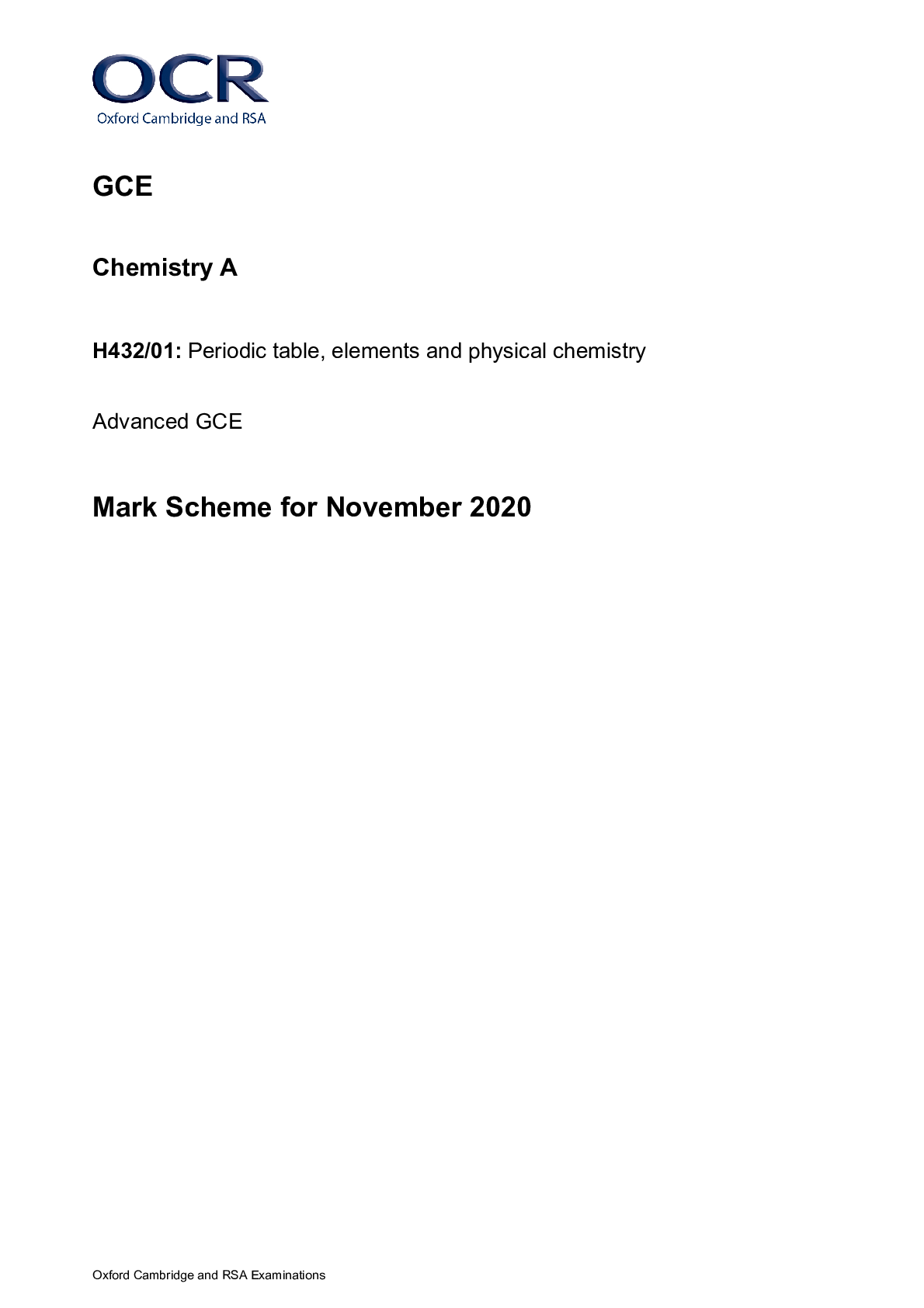


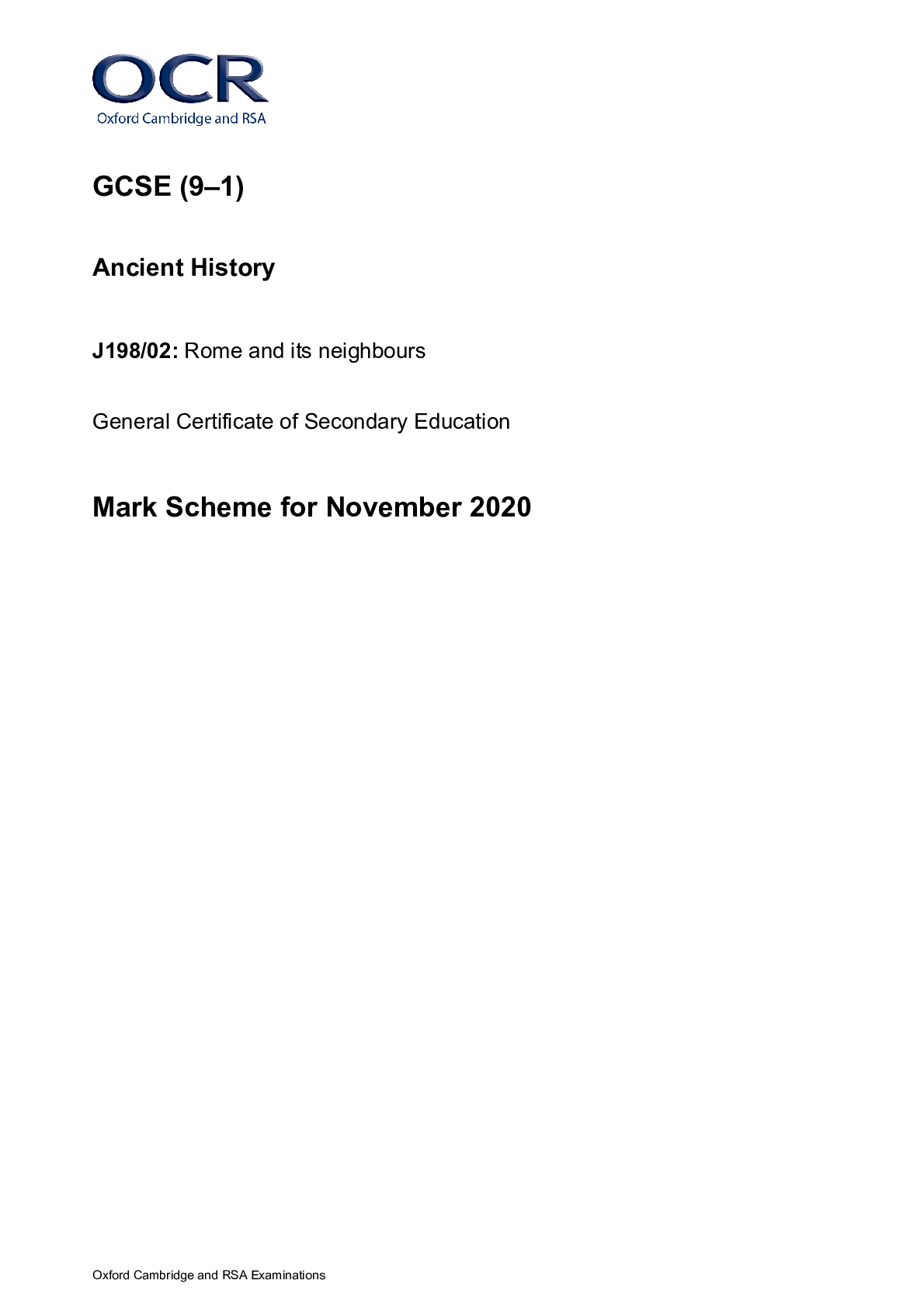




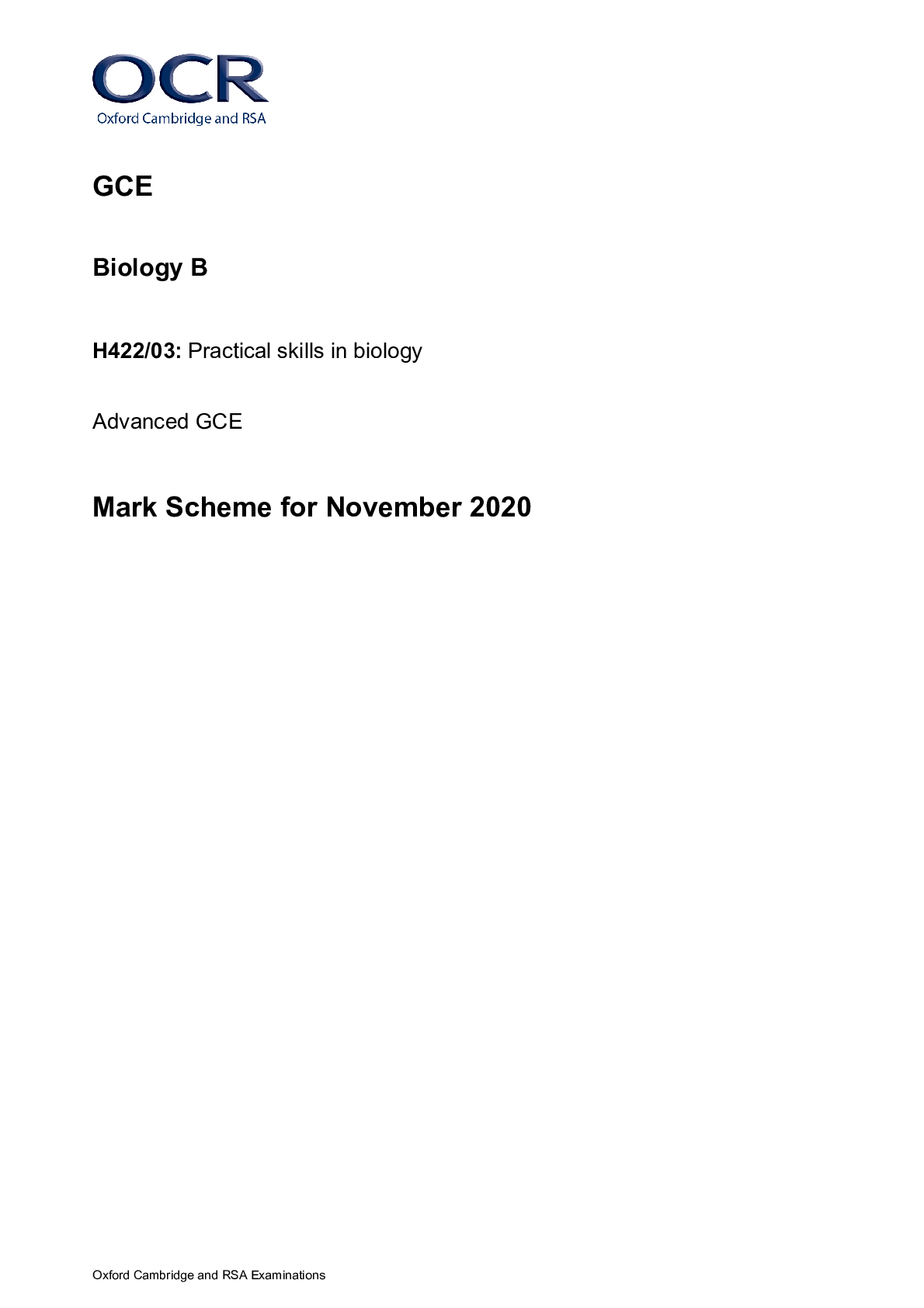
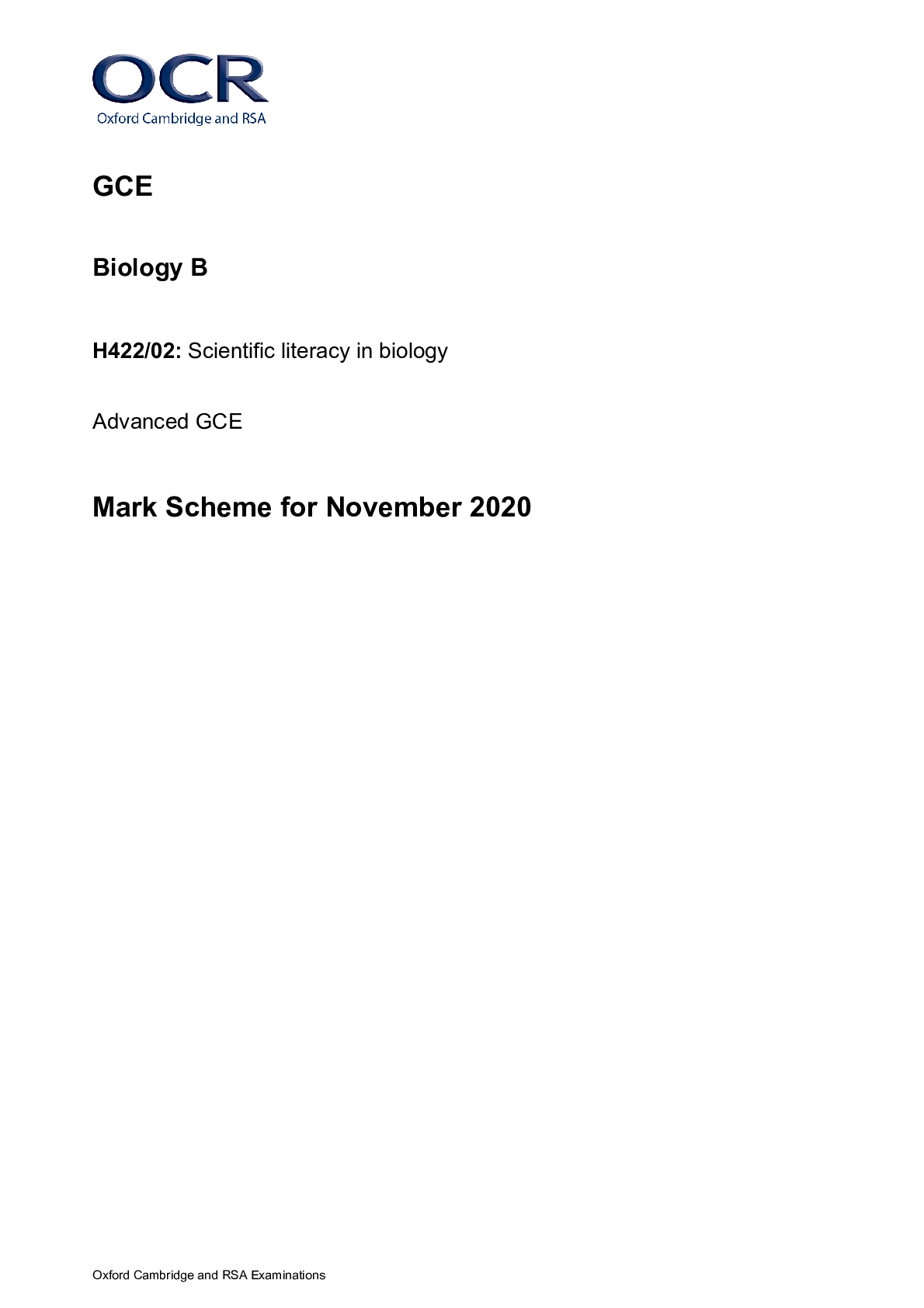
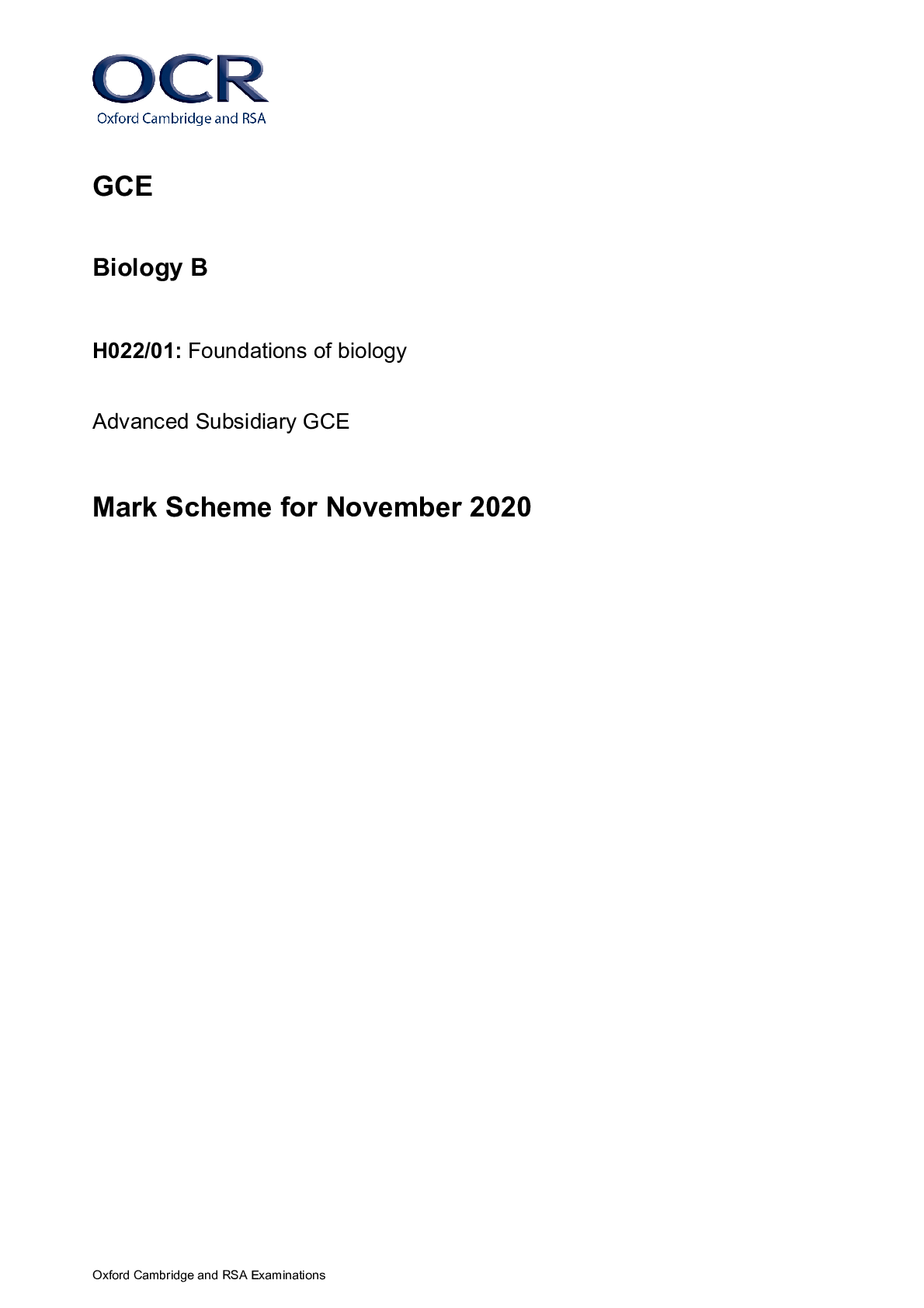



.png)



